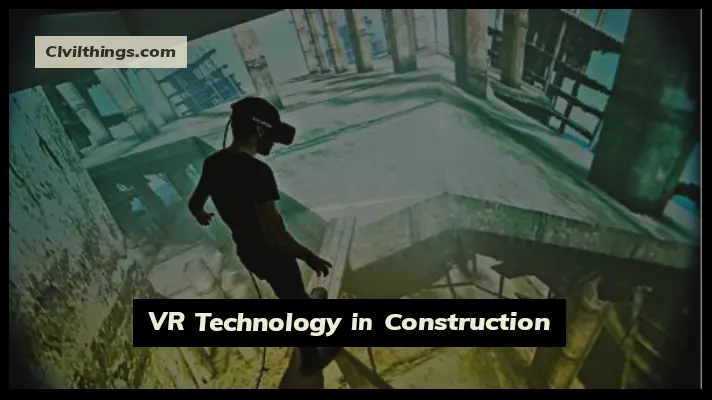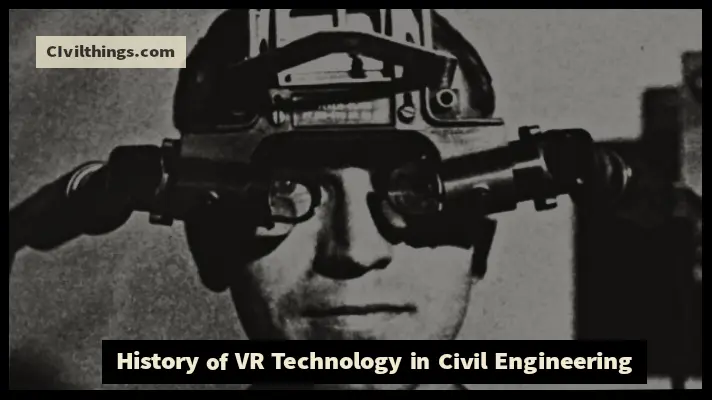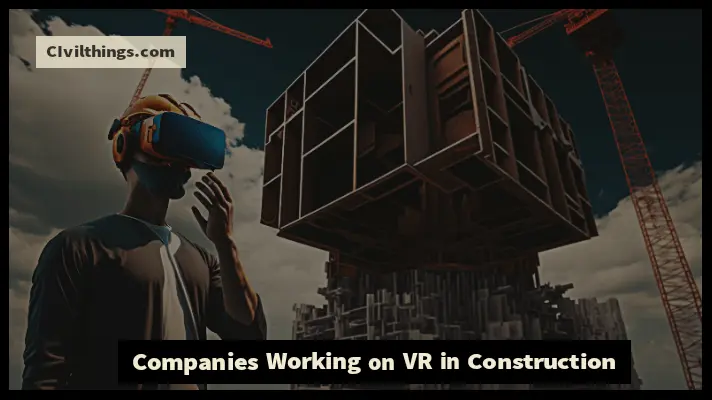
Table of Contents
Introduction of VR Technology in Civil Engineering
Virtual Reality (VR) is an amazing technology that brings imaginary worlds to life, and it’s not just for playing games! In the field of Civil Engineering, VR is like a magical tool that helps engineers and builders create and explore amazing structures before they are even built. Let’s take a fun journey into the world of VR in Civil Engineering!
Short History of VR Technology in Civil Engineering

VR is not a new idea; it’s been around for many years. The first concepts of VR started in the 1960s, but it became more popular in recent times. Today, we have advanced VR headsets and tools that make it super cool for many industries, including Civil Engineering.
Technical Information
| Term | Definition |
|---|---|
| VR Headset | Special glasses or a helmet-like device you wear for VR |
| 3D Modeling Software | Computer programs that create 3D images and structures |
| Haptic Feedback | Technology that lets you feel and touch virtual objects |
Applications of VR Technology in Civil Engineering
VR in Civil Engineering is like a superhero tool with many cool applications:
Virtual Site Inspections: Engineers can “visit” construction sites without leaving the office using VR.
Design Visualization: VR helps turn 2D drawings into 3D models for better understanding.
Training Simulations: Future builders can practice in a VR world before working on real projects.
Real Life Use with Example of VR Technology in Construction
Imagine building a tall skyscraper! VR can help engineers see how the building will look, find problems, and make changes before construction even begins. It’s like having a superpower to see the future of the building!
Advantages of VR Technology in Civil Engineering
VR brings lots of benefits to Civil Engineering:
Saves Time and Money: Finding and fixing problems early saves time and money.
Better Communication: Engineers, builders, and clients can all understand the project better.
Improved Safety: VR helps plan for safer construction sites.
Disadvantages of VR Technology in Civil Engineering
While VR is fantastic, there are a few things to keep in mind:
Cost: Good VR equipment can be expensive.
Learning Curve: It takes time to learn how to use VR tools.
Motion Sickness: Some people may feel a bit dizzy when using VR.
Future of VR in Construction:
The future looks super exciting! VR will keep getting better, making construction even more amazing. Builders will be able to create, explore, and share their ideas in ways we can’t even imagine yet!
Companies Working on VR in Construction

Some cool companies exploring VR in Civil Engineering are:
Autodesk: They create powerful software for 3D modeling and VR.
Trimble: They use VR to improve construction processes.
Matterport: They make VR tools for creating realistic 3D models.
In conclusion, VR in Civil Engineering is like a superhero sidekick for builders. It helps them plan, design, and create incredible structures. The future holds even more adventures as VR technology keeps growing and making construction projects more exciting than ever!
Structural Audit – Objectives | Bye-Laws | Importance
Best Methods of Terrace Waterproofing & Roof in Detail
Top 12 Steps Used in Construction Process
Properties of Fresh Concrete | For Best Construction
FAQ
What is Virtual Reality (VR) in Civil Engineering?
Virtual Reality (VR) in Civil Engineering is a technology that creates a virtual environment where engineers and builders can visualize, plan, and simulate construction projects before they are built.
How does VR work in Civil Engineering?
VR uses special headsets and 3D modeling software to create immersive virtual environments. Engineers can wear VR headsets to explore and interact with 3D models of buildings, sites, and structures.
Can VR be used for site inspections in Civil Engineering?
Yes, VR is used for virtual site inspections, allowing engineers to explore construction sites remotely, identify potential issues, and make informed decisions without physically being present.
What are the applications of VR in Civil Engineering?
VR in Civil Engineering has various applications, including virtual site inspections, design visualization, training simulations, and collaborative project planning.
How does VR enhance design visualization in Civil Engineering?
VR helps convert 2D drawings into realistic 3D models, allowing engineers and clients to visualize and understand the design better before construction begins.
Are there any real-life examples of VR being used in construction projects?
Yes, VR is used in real-life construction projects. For example, it can simulate the construction of a skyscraper, enabling engineers to identify design flaws and make necessary changes before actual construction starts.
What are the advantages of using VR in Civil Engineering?
Advantages of using VR include saving time and money, improving communication among stakeholders, and enhancing safety through better planning and visualization.
Are there any disadvantages to using VR in Civil Engineering?
Some disadvantages include the initial cost of VR equipment, a learning curve for users, and the potential for motion sickness in some individuals.
What is the future of VR in the construction field?
The future of VR in construction is promising, with ongoing advancements expected to enhance visualization, collaboration, and efficiency in project planning and execution.
How can VR technology benefit small-scale construction projects?
VR can benefit small-scale projects by offering cost-effective design visualization, efficient collaboration, and improved communication, ultimately leading to better project outcomes.
Which companies are leading in the development of VR technology for Civil Engineering?
Some leading companies include Autodesk, Trimble, and Matterport. These companies develop software and tools that leverage VR to enhance various aspects of Civil Engineering projects.

Hi! I’m Sandip, a civil engineer who loves sharing about Civil Engineering & new ideas and tips. My blog helps you learn about engineering in a fun and easy way!

